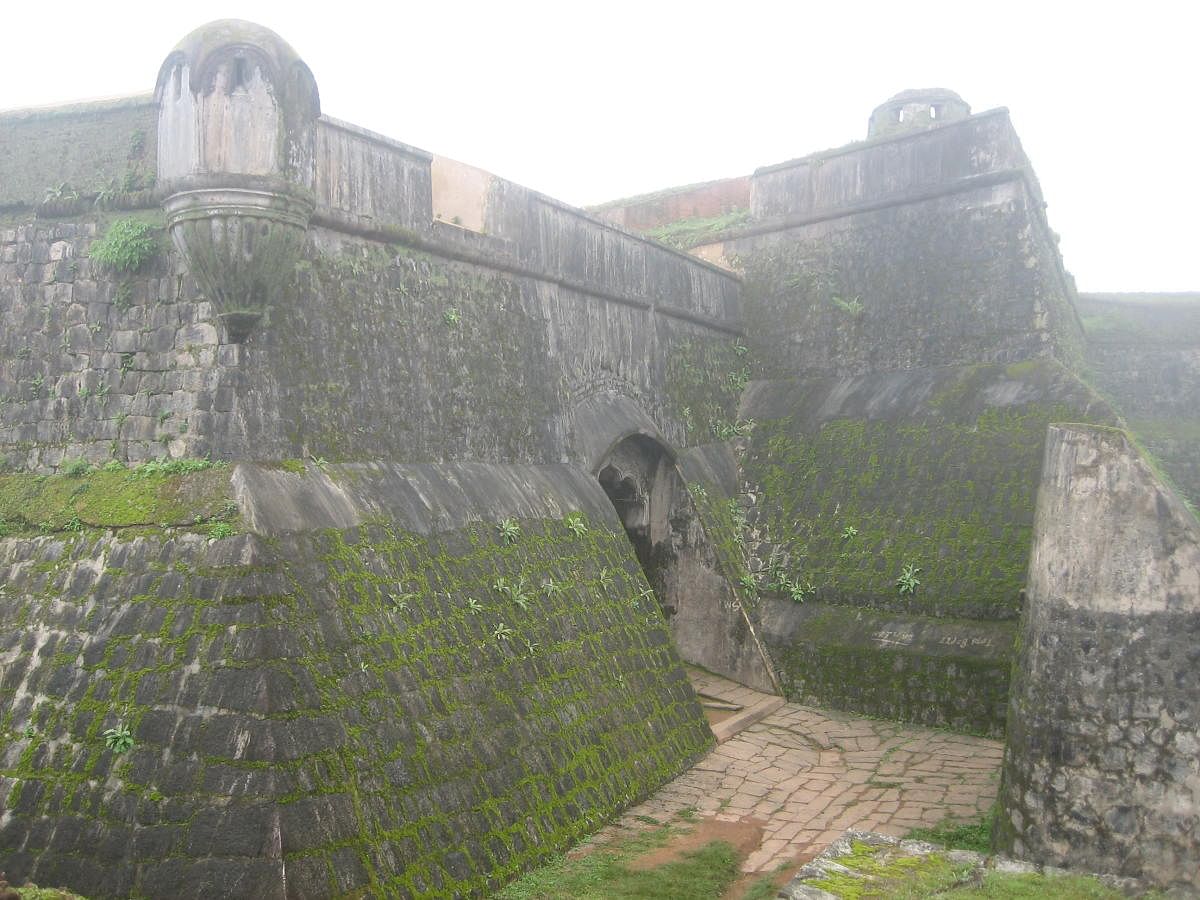
Being cooped up for months can push you to do things that you wouldn’t normally do. I like well planned and leisurely trips. But on a recent Sunday, I agreed to accompany the family without knowing the destination and then ended up doing a 450 km trip on a single day.
I was told that we were on our way to Manjarabad Fort near Sakaleshpur only after we left Bengaluru. My phone informed me that it is a star-shaped fort built by Tipu Sultan in 1792. Designed by French Military architects, this fort was strategic in Tipu’s expansionist plans. It was also used by the Tiger of Mysore for storing weaponry. That you have to climb 250 steps to reach the ramparts was a daunting prospect but I was in an adventurous mood.
The drive to Sakleshpur is invigorating. Amidst all that scenic beauty it is easy to miss the fort. But the cacophony of vehicles and the sudden appearance of several shops let us know that we had reached a touristy place. A barely visible ASI board at the entrance gate welcomed us.
The fort, situated at a height of 3,241 ft was not yet visible and I was to find out that because of the winding path it remains hidden from full view. The steep steps with railings start soon. As we climbed, I wondered whether we were tracing the same steps that Tipu’s soldiers trod over two centuries ago. Or did horses carry them? How would weaponry be transported? Huffing and puffing I reached the moss-covered, arched entrance to the fort. The narrow passage with enclosed spaces on both sides reminded me of the cave temples of Badami. The fort opens up just outside of the passage. Up another short winding path and I could envision the star shape. Near each point of the star is the watchtower. I could well imagine sentries on cold nights huddled in these places. The vistas all around are breathtaking and it is said that Tipu Sultan named it Manjarabad due to the mist (Manju in Kannada) that envelops this place. The ramparts of the fort were offering plenty of photo-ops to the young and not so young-but a notice board said a strict no to drone shots much to our disappointment.
With sloped walls on all sides, the fort appears formidable. Although now overrun by wild growth, the moats are discernible too. There is also a stepwell and two cellars whose interiors remain cool enough to have stored gunpowder. Internet speculates that there was an underground passage that connected the fort all the way to Srirangapatna. Though seemingly far fetched, it is such legends that add allure to a place. It was time to head back from this lesser-known attraction of our state.